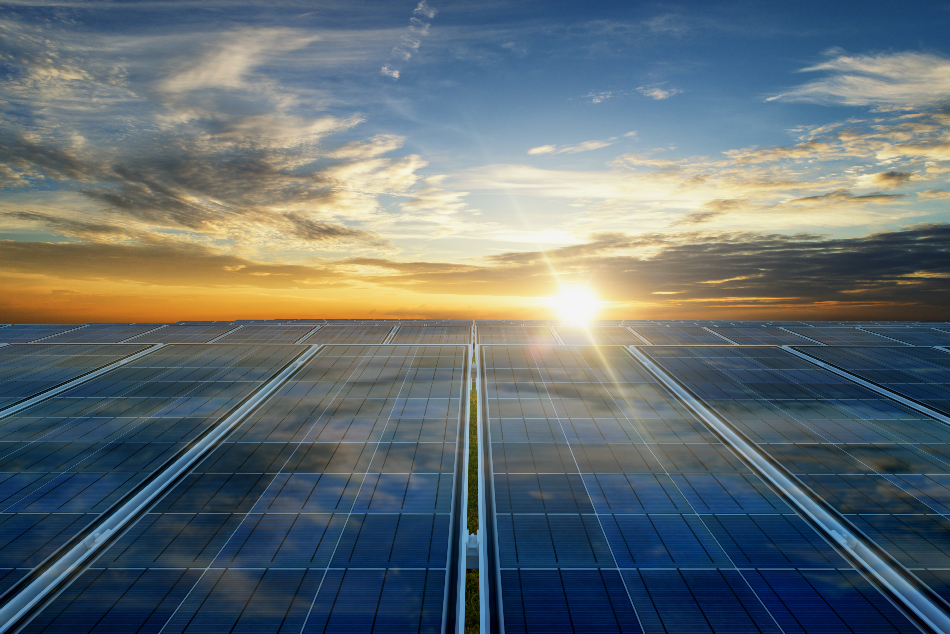Recently, governments and local government bodies around the world responded to the warnings of the scientific community and pressure from their (especially younger) populations to declare a state of climate emergency. These declarations will help increase efforts to reduce harmful effects of human activity on the planet’s climate and ecosystems. A significant part of these efforts must be to reduce our dependence on fossil fuels by generating and using energy sustainably.

Image Credit/Shutterstock: Sutadimage
The key to pushing for a more sustainable energy generation is ensuring renewable solar power can be collected and converted into electricity as efficiently as possible. One promising area of clean technology that could help us reach maximum efficiency in solar energy, is nanophovoltaics.
Third-Generation Photovoltaics
Nanophotovoltaics are a part of the latest generation of photovoltaic technology. Photovoltaic materials are those which convert solar energy (photons) into electrical energy (electrons). Photovoltaic cells are the components of solar panels, enabling a device to generate electrical energy from the energy of the sun.
The first solar energy technology to emerge and gain commercial viability were multijunction cells developed in the mid-1970s. After this came crystalline photovoltaics which are cheaper (albeit in general, slightly less efficient) than multijunction cells. The latest third generation photovoltaics include photoelectrochemical cells, polymer solar cells and perovskite solar cells – as well as various types of nanophotovoltaics.
Nanophotovoltaics
One nanometer, or 1 nm, is equal to one billionth of a meter or 10-9 m, and nanophotovoltaics are photovoltaic materials and technology that are manufactured and can operate in these miniscule scales.
There are a few types of nanophotovoltaics in development, but all rely on coating the photovoltaic material on to a thin film (as thick as 100 nm or less) and then on a substrate material. Dye-sensitized solar cells are an exception to this rule, with the substrate forming part of the nano-structuring of the photovoltaic material and properties of the solar energy generating device.
Nanocrystals
The most common nanophotovoltaic technology use nanocrystals of various crystalline photovoltaic materials to capture the sun’s energy, converting it into electricity. These tiny crystals are typically based in silicon, cadmium telleride, or copper indium gallium (de)selenide.
They are manufactured using a process known as molecular beam epitaxy, however researchers are moving away from this due to its prohibitive expense. Now, colloidal synthesis is commonly employed to coat the nanocrystals onto the substrate material.
In colloidal synthesis, spin-coating the substrate results in an even thin film of nanocrystals being applied. This requires manufacturers to place a certain quantity of the nanocrystal solution onto the substrate, then rapidly spinning the substrate until a consistent thin film layer is achieved. The manufacturer continues to spin the substrate until the desired thickness is coated.
Quantum Dot Photovoltaics
A related nanophotovoltaic technology is the various types of quantum dot cells that are currently under development. Colloidal titanium oxide films can be dye-sensitized and applied to the substrate in a single-nanocrystal architecture, producing a nanophotovoltaic material at relatively low cost and high efficiency.
Advantages of this method – as well as potentially higher efficiency for lower manufacturing cost – include material flexibility, allowing the photovoltaic material to be coated on a wider range of substrates and applied in more diverse settings.
Efficiency of Nanophotovoltaics
Nanophotovoltaic efficiency is rising rapidly, and while not yet at the level of the most efficiency (28% for Oxford PV compared to 47.1% for NREL), the direction of travel is incredibly promising. No other photovoltaic type has risen in efficiency as fast as nanophotovoltaics, and the increased interest and attention on the climate emergency and sustainable energy, in general, indicates this rise will continue in the coming years.
References and further reading
Disclaimer: The views expressed here are those of the author expressed in their private capacity and do not necessarily represent the views of AZoM.com Limited T/A AZoNetwork the owner and operator of this website. This disclaimer forms part of the Terms and conditions of use of this website.